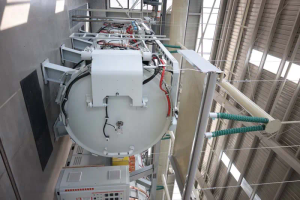Electrodes grown in living tissue for the first time, laying the groundwork for future treatments for neurological disorders
The lines between biology and technology are blurring. Researchers at Linköping University, Lund University and Gothenburg University in Sweden have succeeded for the first time in growing electrodes in living tissue using molecules from the human body as triggers. The findings, published in the latest issue of the journal Science, pave the way for the formation of fully integrated electronic circuits in living organisms.
Linking electronic devices to biological tissues is important for understanding complex biological functions, combating brain diseases, and developing future human-machine interfaces. However, traditional bioelectronics, which has developed in parallel with the semiconductor industry, has a fixed and static design, which is difficult to integrate with living biological signaling systems.
To bridge the gap between biology and technology, researchers have newly developed a method for fabricating soft, substrate-free, conductive materials in living tissue. The researchers were able to grow electrodes in the tissue of zebrafish and medicinal leeches by injecting gels with enzymes as “assembly molecules.”
Contact with bodily substances changes the structure of the gel and makes it conductive, which was not conductive before injection, the researchers said. Depending on the tissue, the composition of the gel can also be adjusted to alter the conduction process.
Molecules endogenous to the body are sufficient to trigger electrode formation without the need for genetic modification or optoelectronic external signals, and this latest research paves the way for a new paradigm in bioelectronics. Where previously implanted objects were required to initiate electronic processes in the body, in the future injections of viscous gels will suffice.
The study shows that this method can target conductive materials to specific biological substructures, thereby creating suitable interfaces for neural stimulation. In the long run, it is also possible to fabricate fully integrated electronic circuits in living organisms.
In experiments carried out at Lund University, the research team has successfully formed electrodes around the brain, heart and tail fin of zebrafish as well as around the nervous tissue of medicinal leeches. The animals were not harmed by the gel injection and were not affected by the electrode formation.
https://oaicon.com/index.php/2023/03/10/electrodes-grown-in-living-tissue-for-the-first-time-laying-the-groundwork-for-future-treatments-for-neurological-disorders/
Electrodes in living organisms can obtain various physiological data in the most direct way, even the most difficult to detect neural electrical signals. In the past, implants not only need to help start their electronic processes, but also must have excellent electrical conductivity and high biocompatibility, otherwise the harm they bring may far outweigh the benefits. The research in this paper directly abandons the action of “implantation”, but “injects” a little glue, and then uses the natural nature of the organism to “grow” the electrode. If it is proved to be safe in the human body, it will undoubtedly become one of the most powerful tools for health monitoring and medical diagnosis in the future.






